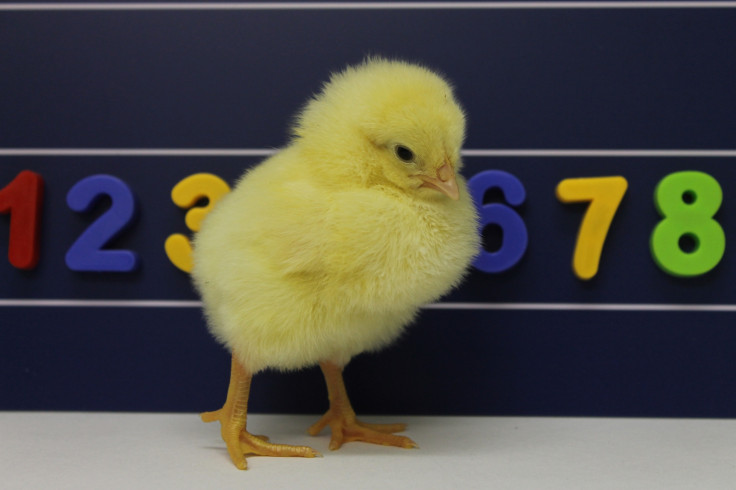Watch chicks count from left to right just like humans do
Chicks count from left to right just like humans do, researchers have discovered, with video evidence to prove it.
Led by Rosa Rugani, from the University of Padova in Italy, the researchers were looking to test the mental number line – the left-to-right spatial representation where small values are located on the left and larger values appear on the right.
They wanted to see if the number line develops with cultural experience or if it is an innate behaviour.
Published in the journal Science, findings suggest it is the latter, as the chicks appear to utilise the line when presented with two different panels with markings on them depicting numbers.
After first being familiarised with the number five, they were shown panels with two on it. The majority of the chicks moved to the left in search of a food reward. When presented with the number eight, they moved to the right.
This was seen again when the number values were increased, with the familiar number being 20. When eight was the small value, they moved to the left, and when the panel showed 32, they moved to the right.
"Taken together, these findings suggest that a tendency to map numerical values left to right across the mental number line may emerge naturally, regardless of cultural influence," the authors said. "The researchers also note that the brain's asymmetry could have played a role in shaping the mental number line long ago."
Researchers believe the mental number line evolved millions of years ago before human ancestors broke away from birds.

They said:"During evolution, the direction of mapping from left to right rather than vice versa, although in principle arbitrary, may have been imposed by brain asymmetry, a common and ancient trait in vertebrates, prompted by a right hemisphere dominance in attending visuospatial and/or numerical information."
In an email interview with IBTimes UK, Rugani said evolution could have led to brain asymmetry as it allowed animals to process information within a dominant hemisphere. The direction could have been, in principle, "totally arbitrary" in humans – and domestic chickens – she said, though.
Researchers now plan to look at the mental number line in other animals. Rugani said: "I would not at all be surprised that the number spatial mapping is also found in other animals and in newborn infants. I think that the paradigm we designed allows to investigate this behaviour [the spatial-numerical association] in non-verbal subjects [non-human animals and pre-verbal infants].
"We are now extending the investigation to the study of other animal species. The final aim is to identify the neural areas involved in the number processing. This would provide us with data useful to compare the number-space association found in chicks and in humans. In humans, indeed, a topographical representation in the right posterior parietal cortex seems to explain the number-space mapping.
"But such topography has not yet been found in neurons responding to number in animals.
"Finally, we would like to look for the genetic basis of the number sense, which would further help to understand the evolutionary origin of the mental number line."
© Copyright IBTimes 2024. All rights reserved.






